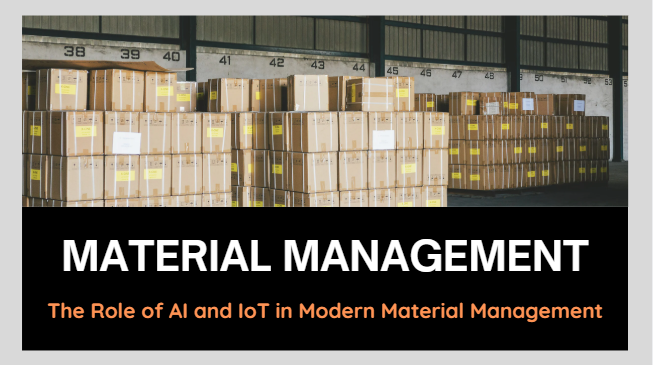
Here are concise descriptions of key interview questions for an operations management role, tailored for students at MIT School of Distance Education (MIT SDE):
Industry Trends & Best Practices
1. How do you stay up-to-date with industry trends and best practices in operations management?
Answer: Staying updated with industry trends involves continuous learning and engagement with professional networks. I regularly read industry journals, attend webinars and conferences, and participate in online forums. Additionally, I follow key thought leaders and organizations on social media platforms like LinkedIn. Being part of professional bodies such as APICS or PMI also provides valuable insights through their publications and events.
Process & Efficiency
2. How do you identify opportunities for process improvement within an organization?
Answer: Opportunities for process improvement are identified through regular analysis of workflows, soliciting feedback from team members, and benchmarking against industry standards. Tools like process mapping and value stream mapping help visualize and pinpoint inefficiencies. Conducting regular audits and using performance metrics to highlight areas needing improvement is also essential.
3. Can you describe a specific instance where you optimized operational processes and achieved cost savings or increased efficiency?
Answer: In my previous role, I implemented a Lean Six Sigma project that reduced production time by 20%. By streamlining the assembly line and eliminating redundant steps, we achieved significant cost savings and improved output. This also involved retraining staff and optimizing resource allocation.
4. How do you handle unexpected disruptions or crises in operations?
Answer: I handle unexpected disruptions by staying calm, assessing the situation quickly, and prioritizing actions. I assemble a response team, communicate transparently with all stakeholders, and implement contingency plans. Post-crisis, I analyze the event to improve future resilience and preparedness.
5. How do you measure and track key performance indicators (KPIs) in your department?
Answer: KPIs are measured and tracked using a balanced scorecard approach, which includes financial, customer, internal process, and learning & growth metrics. Regular reporting through dashboards helps monitor performance against set targets. Tools like ERP systems facilitate real-time tracking and data analysis.
6. What steps do you take to ensure compliance with quality standards and regulations in your operations?
Answer: Compliance is ensured by implementing robust quality management systems (QMS) such as ISO 9001. Regular training sessions for staff on regulatory requirements, internal audits, and third-party inspections help maintain standards. Documenting procedures and maintaining accurate records are also critical steps.
7. How do you balance efficiency with quality in operations?
Answer: Balancing efficiency with quality involves adopting best practices that do not compromise one for the other. Implementing standardized processes, continuous monitoring, and using quality control tools like SPC (Statistical Process Control) ensures both efficiency and high quality. Employee involvement and training are also key to maintaining this balance.
8. How do you handle resource allocation and capacity planning to meet demand fluctuations?
Answer: Resource allocation and capacity planning are managed through forecasting and demand planning tools. Utilizing software like MRP (Material Requirements Planning) and ERP helps in predicting demand and adjusting capacity accordingly. Flexibility in workforce management and maintaining buffer stock are also strategies to handle demand fluctuations.
9. Describe your experience with inventory management and control.
Answer: My experience in inventory management involves using just-in-time (JIT) and ABC analysis techniques. JIT minimizes holding costs by receiving goods only when needed, while ABC analysis prioritizes inventory management efforts based on the value and turnover rate of items. Implementing these methods has led to reduced inventory costs and improved turnover rates.
10. Can you provide an example of how you’ve successfully reduced waste or environmental impact in operations?
Answer: In a previous project, we implemented a waste reduction initiative using Lean principles, which led to a 30% reduction in material waste. We optimized the use of raw materials and introduced recycling practices for scrap materials. Additionally, switching to energy-efficient equipment reduced our carbon footprint significantly.
11. How do you ensure the scalability of processes as the organization grows?
Answer: Ensuring scalability involves designing flexible and modular processes that can adapt to increased volumes. Implementing scalable technology solutions like cloud-based systems and investing in employee training to handle larger operations are also crucial. Regularly reviewing and updating processes to align with growth objectives ensures sustained scalability.
12. What are your long-term goals as an Operations Manager, and how do you see yourself contributing to our organization’s success?
Answer: My long-term goals include advancing my expertise in operations management and leading initiatives that drive efficiency and innovation. I aim to contribute to the organization’s success by implementing best practices, fostering a culture of continuous improvement, and ensuring that our operations align with strategic objectives to achieve sustainable growth.
Problem Solving & Decision Making
13. Describe a challenging problem you encountered in your previous role and how you resolved it.
Answer: A significant challenge was a sudden supply chain disruption that halted production. I quickly assembled a cross-functional team to identify alternative suppliers and negotiate expedited shipping. Implementing a dual-sourcing strategy and increasing safety stock levels resolved the issue and prevented future disruptions.
14. How do you prioritize and make decisions in high-pressure situations?
Answer: Prioritizing in high-pressure situations involves assessing the impact and urgency of tasks using a matrix (Eisenhower Box). I gather relevant data quickly, consult with key stakeholders, and rely on my experience and judgment to make informed decisions. Clear communication and maintaining composure are crucial.
15. Can you provide examples of instances where you had to make tough decisions with limited information?
Answer: In one instance, I had to decide on a major equipment purchase with limited data on future production needs. I conducted a rapid risk assessment, consulted with colleagues for insights, and opted for a modular system that allowed for future upgrades, balancing immediate needs with potential growth.
16. How do you handle unexpected disruptions or crises in operations?
Answer: Handling disruptions involves having a robust contingency plan and being adaptable. During a facility power outage, we activated our backup generators, rescheduled production shifts, and communicated transparently with clients about delays. Post-crisis, we reviewed the incident to improve our emergency response plan.
17. What steps do you take to prevent recurring operational issues or bottlenecks?
Answer: Preventing recurring issues involves root cause analysis using tools like Fishbone diagrams and implementing corrective actions. Continuous monitoring and feedback loops help identify potential bottlenecks early. Regular training and process reviews ensure sustained improvements.
18. How do you involve your team in problem-solving and decision-making processes?
Answer: Involving the team involves fostering a collaborative environment where everyone feels valued. Regular brainstorming sessions, open forums for ideas, and encouraging feedback help. I also use structured approaches like the Delphi method to gather expert opinions and reach consensus on decisions.
19. Can you describe a time when you successfully implemented a cost-saving initiative in your department?
Answer: I led a project that introduced energy-efficient practices in our production process, resulting in a 15% reduction in energy costs. This involved upgrading equipment, optimizing operational schedules to off-peak hours, and training staff on energy-saving techniques.
20. How do you manage risk in your operations?
Answer: Risk management involves identifying potential risks through SWOT analysis, evaluating their impact and likelihood, and implementing mitigation strategies. Regular audits, contingency planning, and maintaining an up-to-date risk register are key practices. Engaging the team in risk assessments ensures comprehensive coverage.
21. Describe a situation where you had to balance short-term gains with long-term strategic objectives in your decision-making.
Answer: A supplier offered a discount for a bulk purchase that promised short-term savings but risked overstocking. I opted for a smaller, just-in-time order to avoid excess inventory costs and maintain cash flow, aligning with our long-term strategy of lean operations.
22. How do you evaluate the success of a decision or solution after implementation?
Answer: Evaluating success involves setting clear metrics before implementation and conducting post-implementation reviews. Analyzing KPIs, gathering feedback from stakeholders, and comparing outcomes against targets help assess effectiveness. Lessons learned are documented for future reference.
Community & Stakeholder Engagement
23. How do you ensure effective communication within the operations team and with other departments?
Answer: Effective communication is ensured through regular meetings, clear documentation, and using collaborative tools like Slack or Microsoft Teams. Establishing open channels for feedback and updates and aligning communication protocols across departments helps maintain clarity and cohesion.
24. Can you share experiences of successfully collaborating with cross-functional teams or external stakeholders?
Answer: Collaborating on a product launch involves coordinating with marketing, sales, and external vendors. We held joint planning sessions, defined clear roles, and maintained regular progress updates. This resulted in a smooth launch and meeting all key deadlines.
25. Describe your approach to conflict resolution, both within your team and with external partners.
Answer: My approach to conflict resolution involves active listening, understanding all perspectives, and facilitating open dialogue to find common ground. Mediation techniques and focusing on solutions rather than blame help resolve conflicts amicably. Documentation of agreements ensures clarity and accountability.
26. How do you handle communicating difficult news or changes to your team or stakeholders?
Answer: Communicating difficult news requires transparency and empathy. I ensure timely and honest communication, explain the reasons behind the changes, and provide a clear action plan. Offering support and addressing concerns helps manage the transition smoothly.
27. Can you provide an example of a successful stakeholder engagement strategy you’ve implemented?
Answer: Implementing a new ERP system required extensive stakeholder engagement. We conducted stakeholder analysis, developed a comprehensive communication plan, and held regular workshops to involve everyone in the process. This ensured buy-in and a smooth implementation.
28. How do you handle communicating difficult news or changes to your team or stakeholders?
I handle difficult news with transparency, providing all relevant facts clearly. I show empathy, acknowledging the impact on the team or stakeholders. I present a clear action plan with steps to address the situation, and I maintain open communication for feedback and support.
29. Can you provide an example of a successful stakeholder engagement strategy you’ve implemented?
I conducted stakeholder analysis, established regular updates, and organized collaborative workshops. In a recent project, engaging community leaders and environmental groups early helped identify and address concerns, resulting in strong community support and project success.
30. How do you ensure that your team’s goals are aligned with the organization’s overall objectives?
I ensure alignment by understanding organizational objectives, setting SMART goals with the team, conducting regular reviews, and maintaining open communication. Performance metrics are tracked, and continuous feedback and recognition keep the team motivated and aligned.


